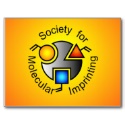|
|
Reference type: Journal
Authors: Ahmadi F, Ahmadi J, Rahimi-Nasrabadi M
Article Title: Computational approaches to design a molecular imprinted polymer for high selective extraction of 3,4-methylenedioxymethamphetamine from plasma.
Publication date: 2011
Journal: Journal of Chromatography A
Volume: 1218
Issue: (43)
Page numbers: 7739-7747.
DOI: 10.1016/j.chroma.2011.08.020
Alternative URL: http://www.sciencedirect.com/science/article/pii/S002196731101185X
Abstract: In this work, a molecular imprinted polymer (MIP) as a novel selective sorbent for extraction of 3,4-methylenedioxymethamphetamine (MDMA) from plasma samples was prepared. For selecting a more suitable monomer and polymerization solvent a methodology based on density functional theory calculations was developed. This computational design is based on the comparison of stabilization energies of the prepolymerization adducts between the template and different functional monomers. The effect of polymerization solvent was studied using of polarizable continuum model (PCM). The computational results revealed that the best suitable monomer and polymerization solvent for preparation of MIP is methacrylic acid (MAA) and chloroform, respectively. Also, another MIP with methacrylic acid (MAA) as monomer in acetonitrile was prepared to evaluate the validity of polarizable continuum model for selection of polymerization solvent. The performance of each polymer was evaluated by using Langmuir-Freundlich (LF) isotherm. As it is expected, the best results were obtained for the MIP which was prepared in chloroform. This MIP was used as a selective sorbent in solid-phase extraction coupled with high performance liquid chromatography-ultraviolet detector (MISPE-HPLC-UV) for rapid screening of MDMA in human plasma. For the proposed MISPE-HPLC-UV method, the linearity between responses (peak areas) and concentrations was found over the range of 3.6 - 11500 ng mL-1 with a linear regression coefficient of 0.998. The limit of detection (LOD) and quantification (LOQ) in plasma were 1.0 and 3.3 ng mL-1, respectively. The %RSD (n = 5) data for five plasma samples containing 15, 25, 50, and 100 ng mL-1 of MDMA were 1.02, 1.12, 2.05, 2.54, respectively
Template and target information: 3,4-methylenedioxymethamphetamine, MDMA
Author keywords: HPLC-UV, Density functional theory calculations, molecular imprinted polymer, 3,4-Methylenedioxymethamphetamine, Plasma samples
|


 SMI mug blue tiled
SMI mug blue tiled







 SMI logo postcard orange gradient
SMI logo postcard orange gradient







 SMI logo mousepad green
SMI logo mousepad green






